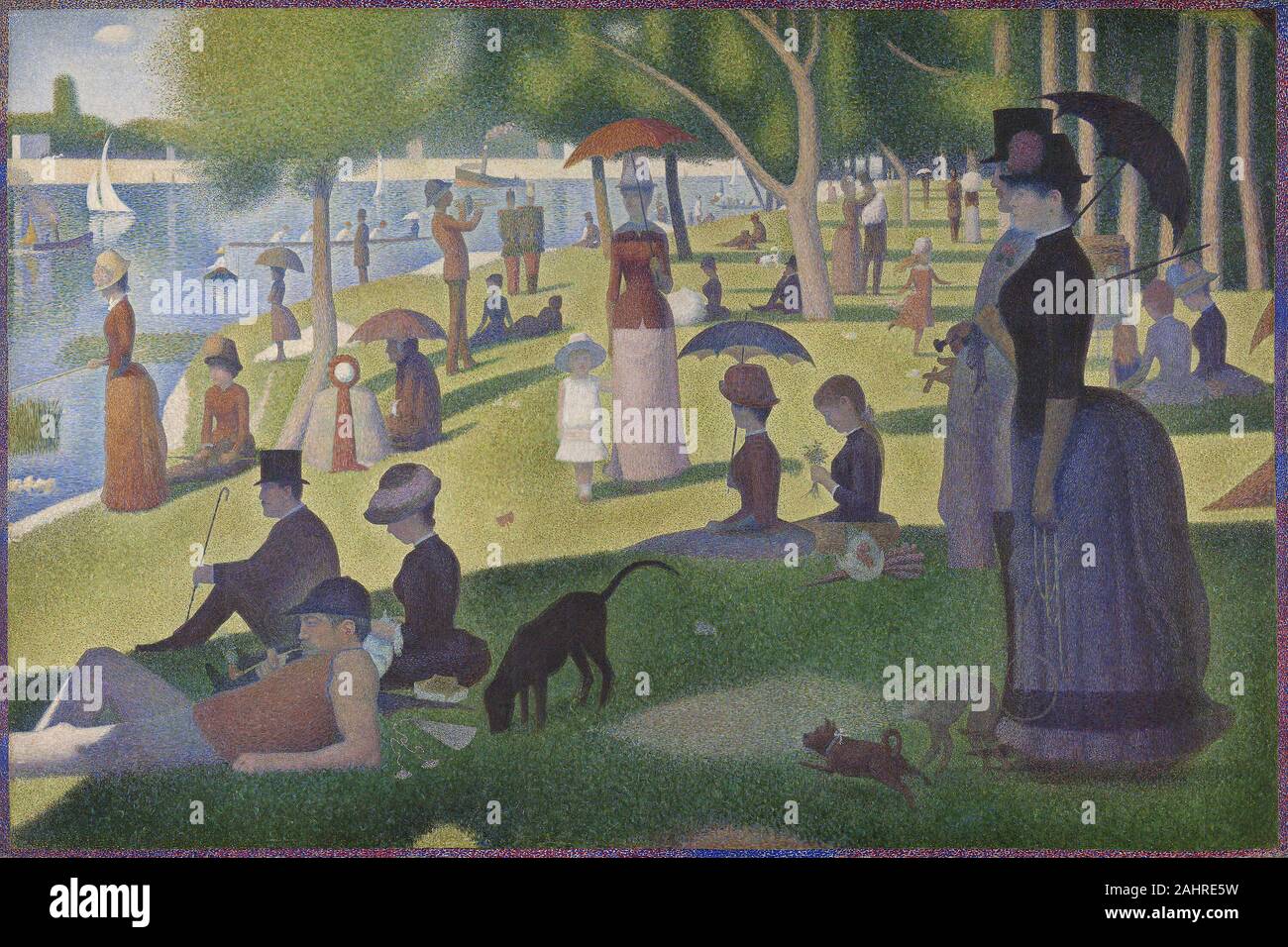Georges Seurat. A Sunday on La Grande Jatte — 1884. 1884–1886. France. Oil on canvas “Bedlam,” “scandal,” and “hilarity” were among the epithets used to describe what is now considered Georges Seurat’s greatest work, and one of the most remarkable paintings of the nineteenth century, when it was first exhibited in Paris. Seurat labored extensively over A Sunday on La Grande Jatte—1884, reworking the original as well as completing numerous preliminary drawings and oil sketches (the Art Institute has one such sketch and two drawings). With what resembles scientific precision, the artist tackled

Image details
Contributor:
WBC ART / Alamy Stock PhotoImage ID:
2AHRE5WFile size:
17.2 MB (1.9 MB Compressed download)Releases:
Model - no | Property - noDo I need a release?Dimensions:
3000 x 1999 px | 25.4 x 16.9 cm | 10 x 6.7 inches | 300dpiMore information:
This image is a public domain image, which means either that copyright has expired in the image or the copyright holder has waived their copyright. Alamy charges you a fee for access to the high resolution copy of the image.
This image could have imperfections as it’s either historical or reportage.
Georges Seurat. A Sunday on La Grande Jatte — 1884. 1884–1886. France. Oil on canvas “Bedlam, ” “scandal, ” and “hilarity” were among the epithets used to describe what is now considered Georges Seurat’s greatest work, and one of the most remarkable paintings of the nineteenth century, when it was first exhibited in Paris. Seurat labored extensively over A Sunday on La Grande Jatte—1884, reworking the original as well as completing numerous preliminary drawings and oil sketches (the Art Institute has one such sketch and two drawings). With what resembles scientific precision, the artist tackled the issues of color, light, and form. Inspired by research in optical and color theory, he juxtaposed tiny dabs of colors that, through optical blending, form a single and, he believed, more brilliantly luminous hue. To make the experience of the painting even more intense, he surrounded the canvas with a frame of painted dashes and dots, which he, in turn, enclosed with a pure white wood frame, similar to the one with which the painting is exhibited today. The very immobility of the figures and the shadows they cast makes them forever silent and enigmatic. Like all great master-pieces, La Grande Jatte continues to fascinate and elude.